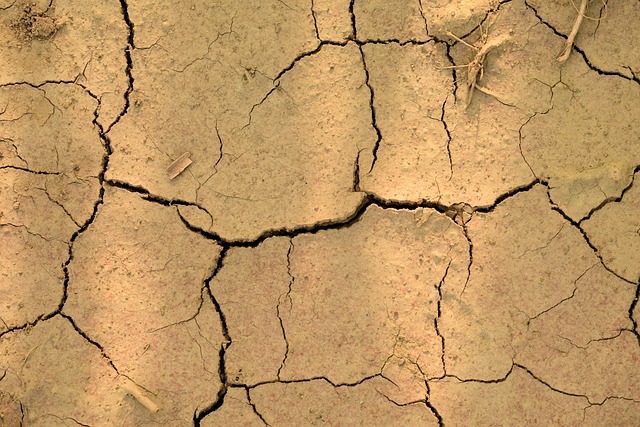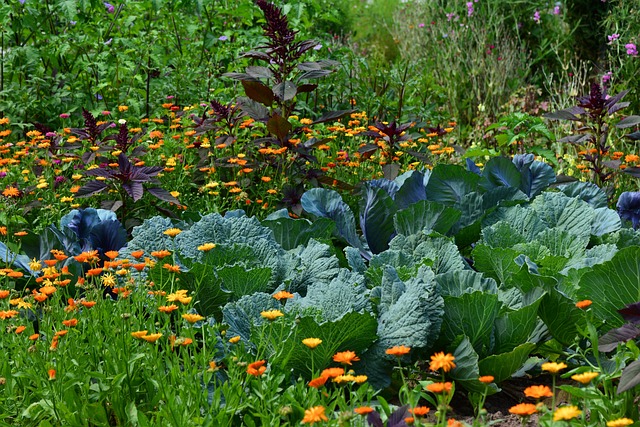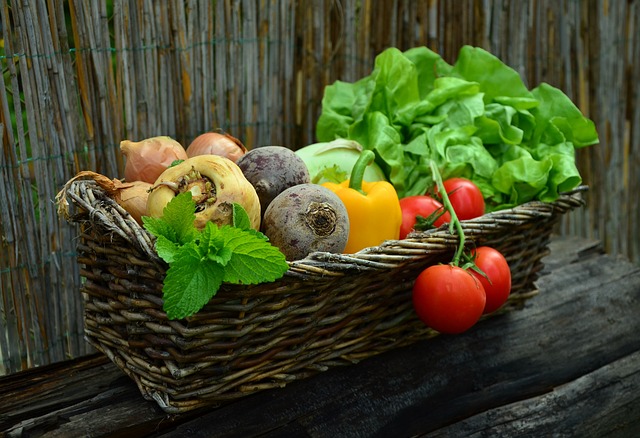Transform your clay soil into a thriving vegetable garden with my expert tips. Say goodbye to compaction and poor drainage as you learn how to amend with organic matter, mulch effectively, and employ gypsum for optimal soil health. Dive into my guide and watch your garden flourish!

🌱 Welcome to my journey of how to improve clay soil for a vegetable garden! I’m Mitch, and if you’ve ever felt frustrated by the challenges of clay soil in your garden, you’re not alone. But fear not, because I’m here to share the strategies that have turned my clay-laden plot into a thriving oasis of greenery and bounty. Join me as we delve into the world of soil improvement, where we’ll conquer compaction, enhance drainage, and enrich fertility. Let’s dig in and cultivate a garden that flourishes like never before! 🌿
Check out my page here to get started
what is clay soil And How can it work
Improving clay soil for a vegetable garden is an investment in the long-term health and productivity of your garden. Here’s why it’s beneficial in the long run:
Firstly, addressing the structure of clay soil lays the groundwork for healthier plant growth. Clay soil’s dense texture can hinder root penetration and water absorption, leading to stunted growth and poor yields. By incorporating organic matter and soil amendments, you gradually loosen the soil, allowing roots to spread more easily and access essential nutrients.
Secondly, enhancing the fertility of clay soil promotes sustained plant growth and vitality. Organic matter serves as a natural source of nutrients, releasing them slowly into the soil as it decomposes. This provides a steady supply of essential elements for plant uptake, ensuring robust growth and higher yields over time.
Furthermore, improving drainage in clay soil prevents waterlogging and reduces the risk of root rot and other water-related issues. By enhancing soil structure and incorporating amendments like gypsum, you create channels for water to flow freely through the soil, promoting healthier root systems and more resilient plants.
Moreover, the long-term benefits of improving clay soil extend beyond your garden’s immediate success. Sustainable soil management practices reduce the need for synthetic fertilizers and chemical interventions, minimizing environmental impact and preserving soil health for future generations.
Ultimately, investing time and effort into improving clay soil sets the stage for a thriving and sustainable vegetable garden. By addressing soil quality and fertility, you create an optimal growing environment that supports healthy plant growth, increases yields, and fosters a deeper connection with the land. With patience and dedication, the rewards of a bountiful harvest and a flourishing garden are well within reach.

check out these posts below for your ultimate Vegetable grow guide
how to improve clay soil for a vegetable garden
Improving clay soil for a vegetable garden requires strategic interventions to address its inherent challenges and create a favourable environment for plant growth. Here’s how to do it:
Add Organic Matter: Incorporating organic matter is key to improving clay soil. Compost, well-rotted manure, leaf mold, or other organic materials help break up clay particles, improve soil structure, and increase nutrient availability. Spread a generous layer of organic matter over the soil surface and work it into the top few inches using a garden fork or tiller. For an article on organic fertilizers head here
Mulch Regularly: Mulching helps protect the soil, retain moisture, and prevent compaction. Apply a layer of organic mulch, such as straw, wood chips, or shredded leaves, around your vegetable plants. Mulch regulates soil temperature, reduces evaporation, and suppresses weed growth. As it breaks down, it adds organic matter to the soil, further enhancing its fertility and structure.
Practice No-Dig Gardening: Minimize soil disturbance by adopting no-dig gardening techniques. Avoid tilling or digging excessively in clay soil, as this can disrupt soil structure and promote compaction. Instead, use raised beds or lasagna gardening methods to create a healthy growing environment. Layer organic materials directly on top of the soil surface to gradually improve soil structure over time.
Incorporate Gypsum: Gypsum, a mineral compound, can help improve clay soil structure by reducing compaction and enhancing drainage. Apply gypsum according to package instructions, spreading it evenly over the soil surface and watering it in. Gypsum works by breaking up clay particles and allowing water and air to move more freely through the soil.
Rotate Crops and Use Cover Crops: Implement crop rotation to prevent soil depletion and maintain soil health. Rotating vegetable crops annually helps reduce the buildup of specific pests and diseases while replenishing soil nutrients. Consider planting cover crops, such as legumes or grasses, during the offseason to protect the soil and add organic matter. Cover crops help prevent erosion, suppress weeds, and enhance soil fertility through nitrogen fixation.

some more Ways
Use Raised Beds: Raised beds provide better drainage and aeration than traditional in-ground planting in clay soil. Build raised beds filled with a mixture of topsoil, compost, and other organic amendments to create a more favorable growing environment for vegetables. The elevated soil level also warms up faster in spring, extending the growing season. I have an article here on how to make a raised garden bed.
Install Drainage Systems: If waterlogging is a persistent issue in your clay soil, consider installing drainage systems such as French drains or tile drains. These systems help excess water drain away from the root zone, preventing waterlogging and improving overall soil health.
Apply Composted Leaves: Composted leaves are an excellent source of organic matter and can be particularly beneficial for improving clay soil. Leaves break down slowly, releasing nutrients into the soil and improving its texture over time. Spread a layer of shredded, composted leaves over the soil surface and incorporate them into the top few inches of soil.
Use Green Manures: Green manures, also known as cover crops, are crops grown specifically to improve soil fertility and structure. Plant cover crops such as winter rye, clover, or hairy vetch in your vegetable garden during the offseason. These crops help prevent erosion, suppress weeds, and add organic matter when incorporated into the soil.
Monitor Soil pH: Clay soil tends to be more alkaline, which can affect nutrient availability to plants. Test your soil pH regularly and amend it as needed to maintain a slightly acidic to neutral pH range (around 6.0 to 7.0) for optimal plant growth. Adding organic matter can help buffer pH fluctuations and improve overall soil health.
Use Grit or Sand: Incorporating coarse materials like grit or sand into clay soil can help improve drainage and break up compacted areas. Mix grit or coarse sand into the top few inches of soil to improve its texture and promote better root penetration.
Practice Crop Rotation: Rotate your vegetable crops annually to prevent the buildup of pests and diseases specific to certain plant families. Crop rotation also helps balance soil nutrients and reduces soil-borne pathogens, contributing to overall soil health and productivity.
By following these steps and consistently caring for your vegetable garden, you can improve clay soil and create an environment where your plants can thrive. With patience and dedication, you’ll enjoy healthy, bountiful harvests from your improved clay soil.
Head over here to read more about clay soil from wikipedia
the wrap up
In conclusion, improving clay soil for a vegetable garden is a gradual process that requires patience, experimentation, and ongoing care. By implementing a combination of strategies such as adding organic matter, mulching, practicing no-dig gardening, incorporating gypsum, and using raised beds or drainage systems, you can gradually transform dense clay soil into a fertile and productive growing medium.
Remember to monitor soil pH, rotate crops, and consider using green manures to further enhance soil health and fertility. Each garden is unique, so it may take some trial and error to find the best approach for your specific soil conditions and gardening goals.
With dedication and persistence, you’ll see noticeable improvements in your clay soil over time, resulting in healthier plants, increased yields, and a more enjoyable gardening experience. Embrace the journey of soil improvement, and celebrate the progress as your vegetable garden thrives in its newly revitalized environment. Happy gardening! And leave us a comment please
Mitch
Follow to stay up to date with new posts!
Our website contains affiliate links. This means if you click and make a purchase, we may receive a small commission. Don’t worry, there’s no extra cost to you. It’s a simple way you can support our mission to bring you quality Gardening Tips.
Last Updated on February 12, 2025 by Mitch

